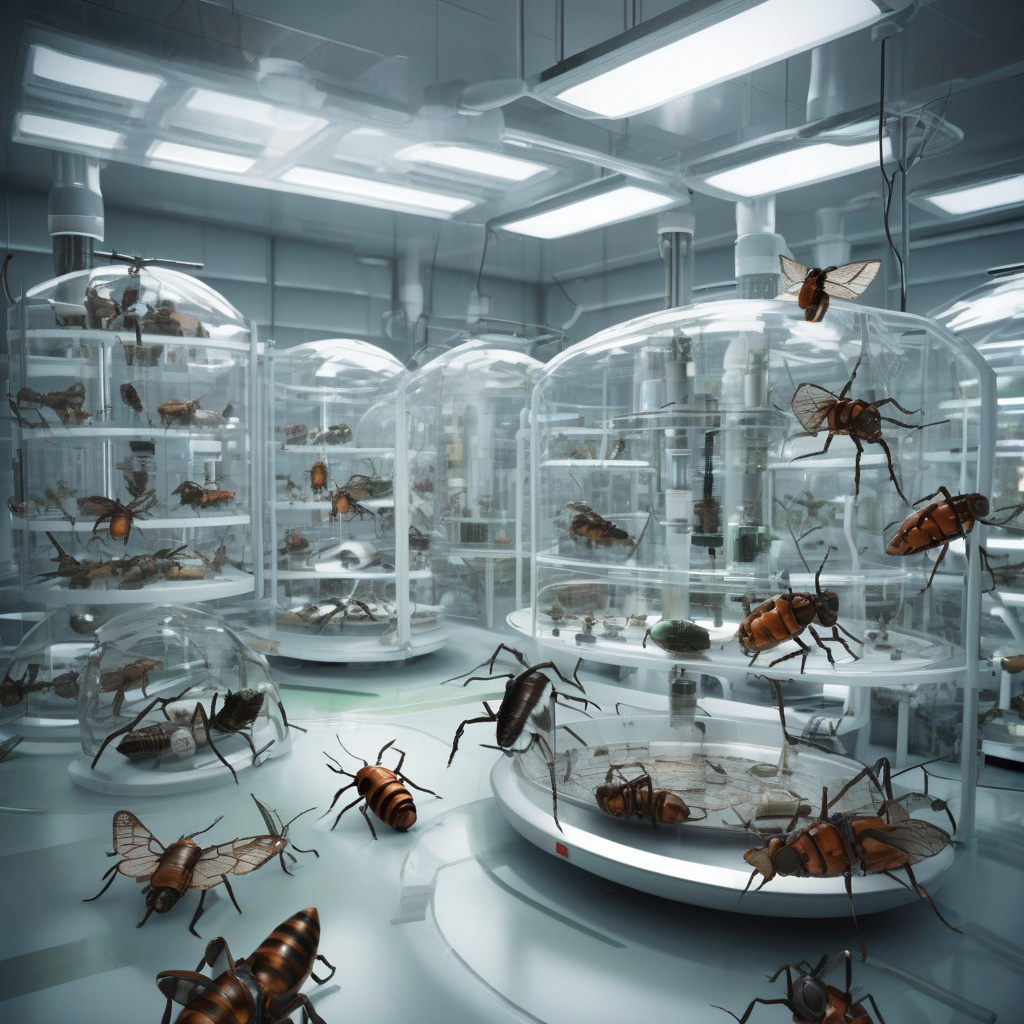Insects as Chemical Reactors: Revolutionizing High-Tech Materials Production from Nanocarbons
Researchers at Japan’s RIKEN Pioneering Research Institute (PRI) and Center for Sustainable Resource Science (CSRS) have taken innovation to a whole new level by tapping into the incredible potential of insects as chemical reactors. This groundbreaking approach is poised to transform the production of high-tech materials derived from nanocarbons, offering a sustainable and efficient alternative to traditional manufacturing methods.
The concept of using insects as chemical reactors may sound like something out of a sci-fi novel, but the reality is far more fascinating. By leveraging the unique biological processes of insects, researchers have found a way to harness their natural abilities to produce nanocarbons with unparalleled precision and efficiency. This novel approach not only streamlines the manufacturing process but also reduces the environmental impact typically associated with traditional production methods.
One of the key advantages of using insects as chemical reactors is their remarkable ability to bioaccumulate and bioconvert various compounds. This means that insects can effectively absorb raw materials and transform them into valuable nanocarbons through their metabolic processes. By carefully controlling the insects’ diet and environment, researchers can manipulate the resulting nanocarbon properties, paving the way for tailored materials with specific characteristics and functionalities.
In addition to the environmental benefits of this approach, using insects as chemical reactors also offers significant cost savings compared to conventional manufacturing techniques. Insects are highly efficient at converting raw materials into nanocarbons, requiring minimal resources and energy input. This not only reduces production costs but also enhances overall process sustainability, aligning with the growing demand for eco-friendly and economically viable solutions in the high-tech materials industry.
Moreover, the use of insects as chemical reactors opens up a world of possibilities for the development of advanced materials with unprecedented properties. From lightweight and durable nanocomposites to flexible and conductive nanofibers, the potential applications of insect-derived nanocarbons are vast and diverse. Industries ranging from electronics and aerospace to biomedicine and renewable energy stand to benefit from the unique characteristics of these innovative materials.
The research conducted by the team at RIKEN PRI and CSRS represents a significant step forward in the field of materials science and nanotechnology. By harnessing the power of nature’s smallest creatures, researchers have unlocked a sustainable and efficient method for producing high-tech materials from nanocarbons. This pioneering approach not only highlights the boundless potential of biomimicry and bioinspiration but also underscores the importance of exploring unconventional avenues in scientific exploration.
As we look to the future of materials innovation, the integration of insects as chemical reactors holds immense promise for revolutionizing the way we design, manufacture, and utilize advanced materials. By embracing nature’s ingenuity and leveraging the inherent capabilities of insects, researchers are driving a paradigm shift in the high-tech materials industry, setting the stage for a new era of sustainable and cutting-edge material solutions.
#InsectInnovation, #NanocarbonRevolution, #HighTechMaterials, #SustainableManufacturing, #MaterialsScienceDiscovery












